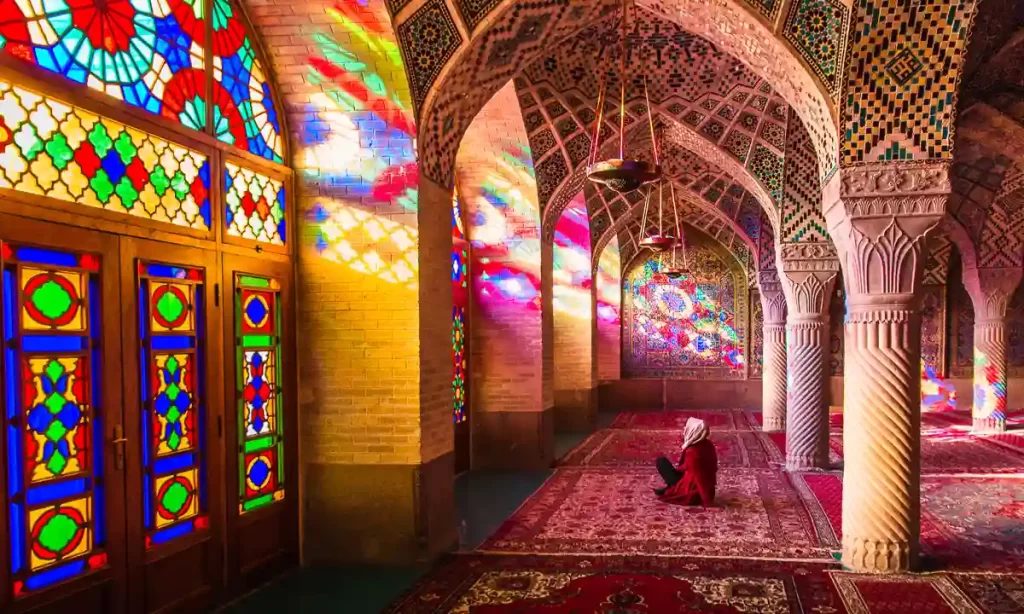Nestled in the heart of Iran’s cultural landscape, Shiraz stands as a beacon of historical richness and architectural splendor, making it a primary destination for tourists from around the globe. Known for its poetic legacy, lush gardens, and vibrant bazaars, this city invites visitors to step into a tapestry of history that dates back over millennia. Whether it’s the allure of tracing the footsteps of famed poets like Hafez and Saadi, marveling at the stunning colors of the Nasir al-Mulk Mosque, or wandering through the aromatic corridors of traditional Persian markets, Shiraz offers a uniquely immersive experience. Its moderate climate, shaped by the Zagros Mountains, ensures that every season paints the city in a different hue, inviting exploration and discovery all year round. This ultimate Shiraz Visitor’s guide will help you to find everything you need to know.
Introduction to Shiraz
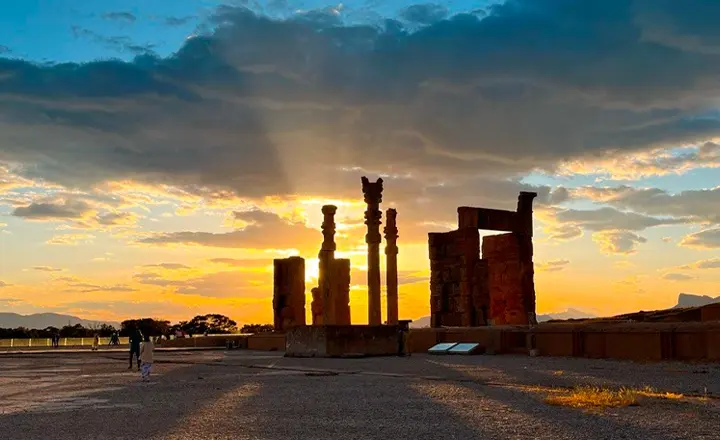
Geographical Location and Climate
Shiraz is located in the southwest of Iran, nestled in a valley in the Zagros Mountains, which contributes to its moderate climate. The city’s elevation, at about 1,500 meters above sea level, plays a significant role in its weather patterns. Shiraz experiences four distinct seasons:
Spring: This season is arguably the most beautiful in Shiraz, with the city coming alive with blooming flowers, particularly the famous Persian roses. The temperatures are mild and pleasant, making it an ideal time for visiting gardens and historical sites.
- Summer: Summers can be hot, with temperatures occasionally reaching high levels. However, the city’s architecture, with its traditional houses and gardens, provides cool retreats.
- Autumn: The autumn months bring a mild and comfortable climate, perfect for exploring outdoor attractions. The changing colors of the leaves in the gardens and streets add to the city’s beauty.
- Winter: Winters are usually short and relatively cold, with occasional rain and snowfall. The cooler weather offers a different perspective on the city’s historical and architectural sites.
This diverse climate, combined with its strategic location, has made Shiraz a key destination not only for its historical and cultural significance but also for its natural beauty and favorable living conditions throughout the year.
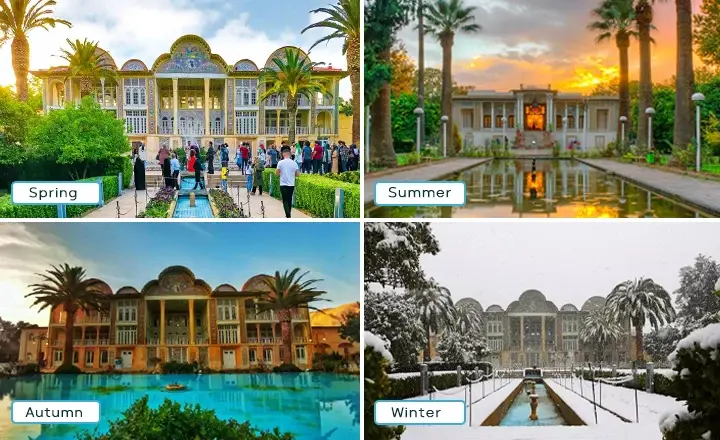
Rich Cultural Heritage
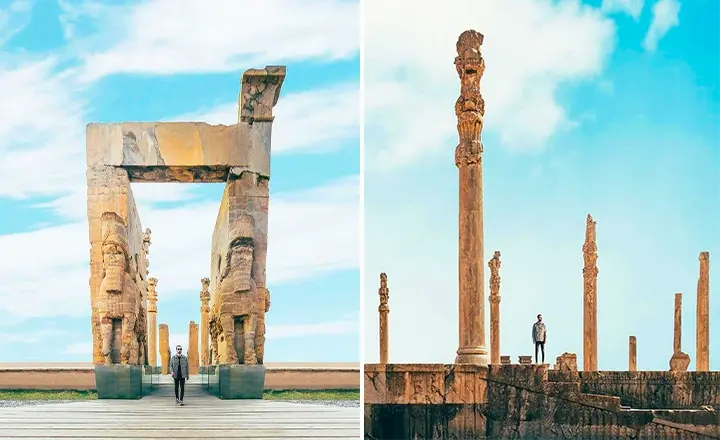
Legacy of Persian Poets: Hafez and Saadi
Shiraz is also celebrated as the home of two of the most revered poets in Persian literature – Hafez and Saadi. Their works have transcended time and borders, capturing the essence of Persian culture, philosophy, and spirituality.
- Hafez: Known for his mystical and lyrical poetry, Hafez is one of the most beloved poets in Iran. His tomb, set within the tranquil Hafezieh Garden, is a place of reverence and beauty. The site, with its serene atmosphere and elegant architecture, is a popular spot for locals and tourists alike, who come to pay homage to the poet’s enduring legacy.
- Saadi: Another jewel in Shiraz’s literary crown is Saadi, renowned for his wisdom and the moral depth of his works. The Tomb of Saadi, also known as Saadieh, is an iconic site that beautifully encapsulates Persian architectural and garden design. Visitors often stroll through the surrounding gardens and reflect on Saadi’s profound verses inscribed within the mausoleum.
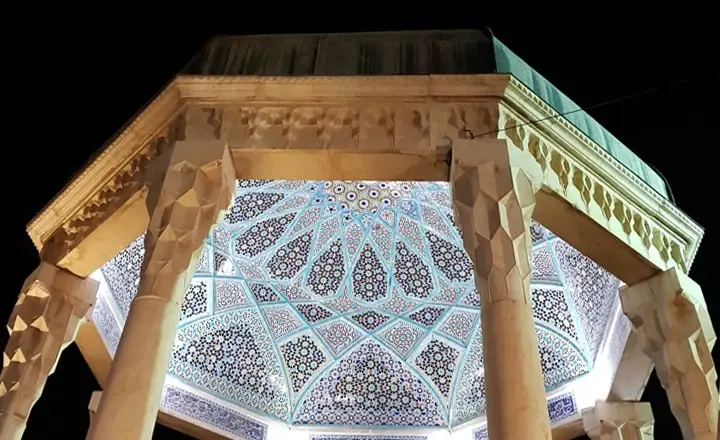
Museums and Art Galleries
Shiraz is home to numerous museums and art galleries, each offering a unique perspective on the rich tapestry of Persian history and art. These institutions house extensive collections of artifacts, manuscripts, and artworks that span centuries, providing insights into the cultural and historical evolution of Iran. Some notable examples include:
- Pars Museum: Situated in the heart of Shiraz in Nazar Garden, this museum displays a collection of artifacts, calligraphy, and paintings, capturing the essence of Persian art and history.
- Shiraz Art Museum: This museum is renowned for its collection of contemporary and traditional Persian art, offering a window into the evolving artistic landscape of the country.
Through these historical sites, the legacy of its poets, and its museums and galleries, Shiraz proudly showcases its rich cultural heritage, making it an unmissable destination for those seeking to immerse themselves in the depths of Persian culture and history.
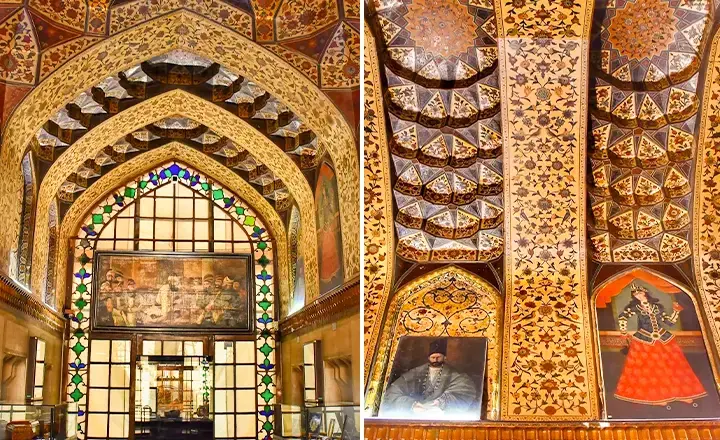
Stunning Architecture and Gardens
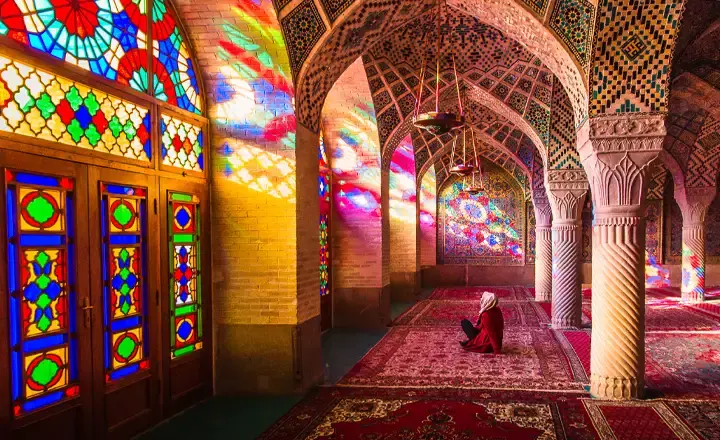
Eram Garden: A UNESCO World Heritage Site
Eram Garden, part of the “Persian Gardens” collection recognized by UNESCO, is a historic and botanical marvel in Shiraz. This garden exemplifies the quintessential style of a Persian garden with its symmetrical layout, flowing water, and lush vegetation. Each season brings a new facet of beauty to Eram Garden: spring with its blooming flowers and vibrant greenery, summer’s full-bodied lushness, autumn’s golden hues, and the serene calmness of winter. The garden is not only a feast for the eyes but also a symbol of the architectural and environmental ingenuity of ancient Persia.
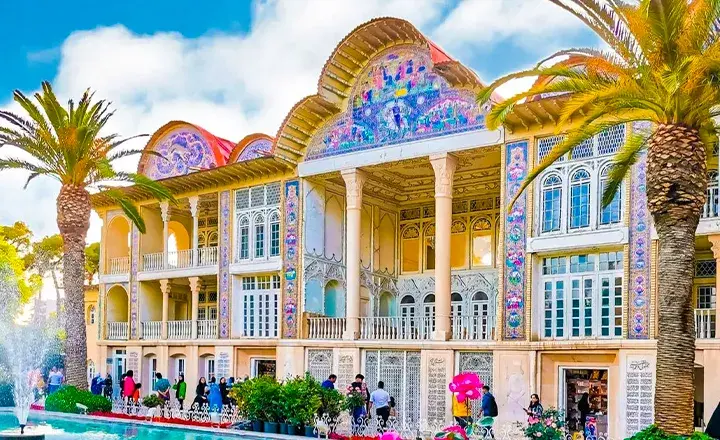
Traditional Persian Gardens of Shiraz
Shiraz is dotted with numerous traditional Persian gardens, each offering a unique ambiance and experience. These gardens are based on the ancient concept of paradise – an enclosed space with water, greenery, and cool structures. Key elements include:
- Water Features: Central to these gardens are water features like fountains and streams, designed to cool the air and add a sense of tranquility.
- Pavilions and Palaces: Many gardens feature ornate pavilions or palaces, which served as summer retreats for royalty and are now points of interest for visitors, showcasing exquisite Persian architecture.
- Floral and Plant Elements: The gardens boast a variety of plants and trees, including cypress trees, roses, jasmine, and fruit trees, creating a sensory experience of aromas and colors.
These gardens are not just beautiful landscapes; they are expressions of the deep philosophical, mystical, and cultural values of Persian society. They offer a serene escape from the city and provide a window into the soul of Persian art and architecture.
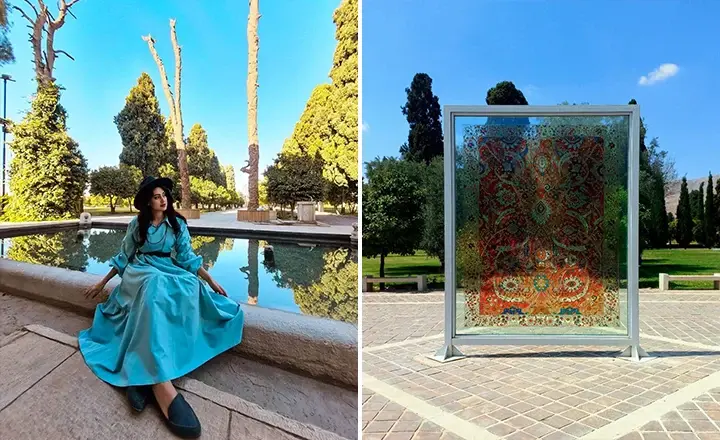
Vibrant Local Cuisine and Markets
- Kalam Polo: A local favorite, this dish combines cabbage, meatballs, and rice, seasoned with a special blend of spices unique to Shiraz.
- Faloodeh Shirazi: A traditional Iranian cold dessert, it’s particularly famous in Shiraz. Made with thin vermicelli noodles frozen in a syrup of sugar and rose water, it’s often served with lime juice and can be a refreshing treat on warm days.
- Shirazi Salad: A simple yet delicious salad made with cucumbers, tomatoes, onions, and a dressing of lime juice and olive oil, embodying the freshness of local produce.
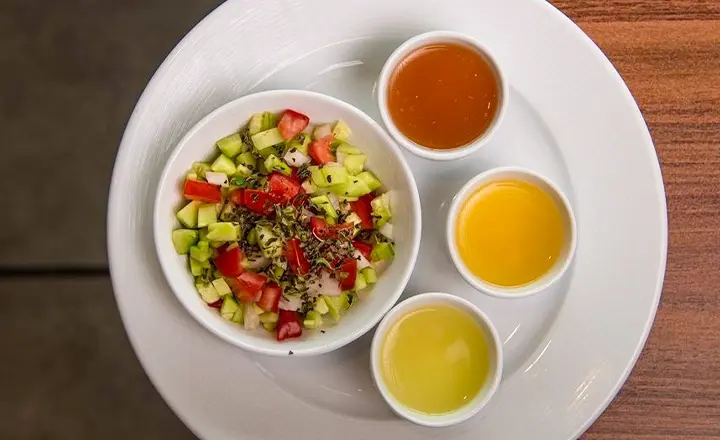
Exploring Bazaars and Local Markets: Vakil Bazaar and Beyond
- Vakil Bazaar: Known for its wide corridors and beautiful carvings, the bazaar is a great place to experience the local culture and shop for traditional Iranian handicrafts, spices, rugs, and textiles.
- Artisan Workshops: Within the bazaar, there are numerous workshops where artisans create traditional handicrafts, offering a glimpse into the skill and artistry of local crafts.
- Spice Shops: The bazaars of Shiraz are also famous for their array of spices, nuts, and dried fruits, which are essential components of Persian cuisine.
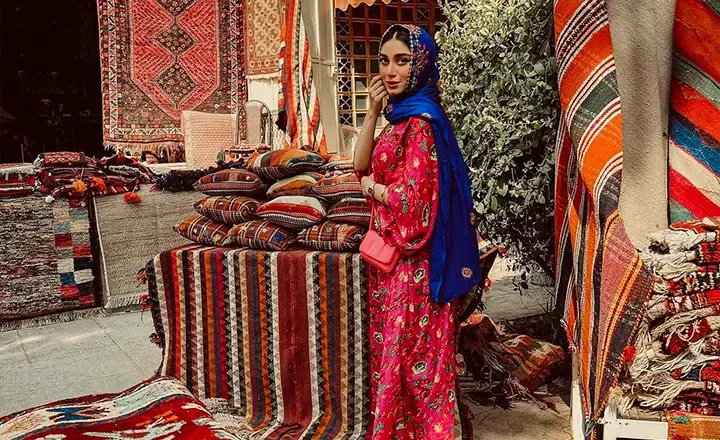
Seasonal Food Experiences and Culinary Tours
Festivals and Year-Round Events
- Nowruz: Celebrated at the onset of spring (usually on March 21st), Nowruz symbolizes renewal and rebirth. In Shiraz, this festival is marked with special customs, including the setting of the “Haft-Seen” table, which features seven items starting with the letter ‘S’ in Persian, each symbolizing a different hope for the new year. The city comes alive with street festivals, traditional music, and dance performances.
- Yalda Night: Another important cultural event is Yalda Night, the longest night of the year, typically falling on December 21st. Families gather to eat, read poetry (especially Hafez), and celebrate the triumph of light over darkness.
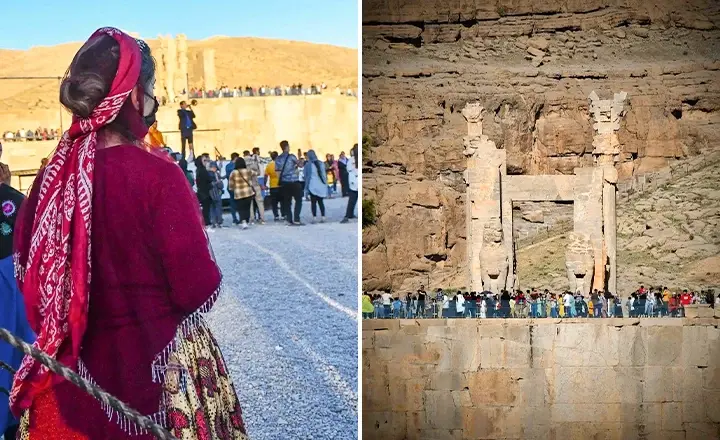
Season-Specific Activities
Regular Art, Literature, and Music Events
Transportation in Shiraz
Public Transportation
Buses: Shiraz has an extensive network of public buses that cover various parts of the city. These buses are an economical way to travel, and they connect major attractions, residential areas, and business districts.
BRT (Bus Rapid Transit): Shiraz has a BRT system, which is a faster option compared to regular buses. The BRT buses run on dedicated lanes, providing a more efficient travel option during peak hours.
Personal Transportation

Specialized Transportation
Intercity Transportation
Last Word
FAQ
What makes Shiraz an ideal destination to visit in any season?
Shiraz offers a unique blend of cultural heritage, stunning natural landscapes, and pleasant weather year-round. Spring is celebrated for its beautiful gardens in full bloom, while summer boasts vibrant festivals and events. Autumn brings mild temperatures and stunning foliage, and winter offers a peaceful, less crowded experience with many historical sites still accessible. This diverse appeal ensures that there is always something special to experience in Shiraz, no matter when you visit.
What are the top attractions to visit in Shiraz throughout the year?
Shiraz is home to numerous attractions that can be enjoyed in any season. Key highlights include the historic Persepolis, the stunning Nasir al-Mulk Mosque (Pink Mosque), the Eram Garden, and the Tomb of Hafez. Additionally, the Vakil Bazaar offers a year-round shopping experience, and the city’s various museums, such as the Pars Museum and the Shiraz Art Museum, provide cultural insights regardless of the weather.
How is the weather in Shiraz different across the seasons?
Shiraz experiences a semi-arid climate with distinct seasonal variations. Spring (March to May) is mild and fragrant with blooming flowers. Summer (June to August) can be hot, but it’s perfect for evening strolls and festivals. Autumn (September to November) offers comfortable temperatures and picturesque scenery. Winter (December to February) is cooler but still relatively mild compared to many other destinations, making it a peaceful time to explore the city’s historical and cultural sites.
Are there any seasonal events or festivals in Shiraz that tourists should be aware of?
Yes, Shiraz hosts several seasonal events and festivals that add to its charm. In spring, the Nowruz (Persian New Year) celebrations are vibrant and filled with cultural activities. Summer sees a variety of music and cultural festivals. The autumn season often features poetry and art events, celebrating the city’s rich literary heritage. Winter, while quieter, offers traditional celebrations like Yalda Night, the longest night of the year, which is celebrated with poetry, food, and family gatherings.
